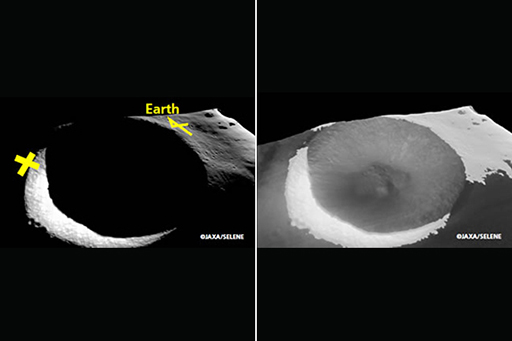2.6 Results from SELENE
Frustratingly, however, Kaguya failed to see any evidence for water-ice exposed in the bottom of Shackleton crater, and these findings only generated further debate about the likelihood of finding any water on the Moon. (The two images above show the same region. On the left is a normal exposure. On the right the data have been processed to bring out the previously invisible detail inside the shadows, which are illuminated faintly by the sunlight reflected diffusely into them from the sunlit areas.)

See also http://shadowcam.sese.asu.edu/ images/ 1284 [Tip: hold Ctrl and click a link to open it in a new tab. (Hide tip)] for the first high resolution image inside the shadowed part of Shackleton, from ShadowCam, carried by the Korean Pathfinder Lunar Orbiter (KPLO, or Danuri) that went into lunar orbit in December 2022.
